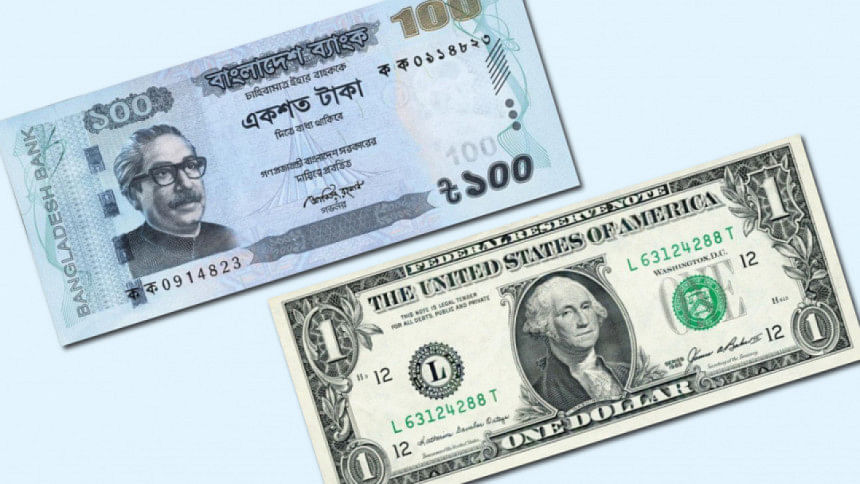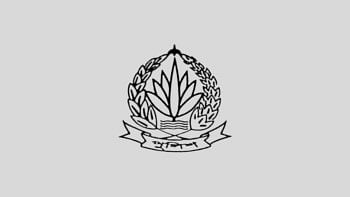Interest rate predicted to go up, taka to weaken further

Businesses are likely to see their borrowing cost rise further thanks to an increase in interest rates, according to an outlook unveiled yesterday.
The taka may depreciate further to Tk 125-Tk 130 per US dollar at the end of June this year.
Amid the situation, companies may face credit constraints and may see lower consumer demand, said the report titled "Storm Clouds and Rainbows" by CAL Bangladesh, a joint venture investment bank.
CAL Bangladesh said it expected a continuation of monetary tightening, which will likely push the interest rate of the 364-day treasury bills to 13-14 percent by the end of June this year.
"The potential increase in interest rate may constrain the private sector credit growth, amplifying the risk of non-performing loans accumulating in the banking system," according to the report shared at an event at the Renaissance Hotel in Dhaka.
CAL said its previous forecast for the exchange rate for 2022 and 2023 was closely aligned with the actual numbers, marking two consecutive years of projection accuracy.
Citing Bangladesh Bank's plan to introduce a crawling peg as part of its strategy to move gradually to market-led exchange rates, the investment bank said the adoption of a crawling peg regime will limit the steep depreciation of the local currency.
"The depreciation pressure is tied to prior money printing and forex intervention which delayed the taka from reaching equilibrium," said the report, presented jointly by Deshan Pushparajah, country head of CAL Bangladesh, and Ahmed Omar Siddique, vice president and head of investment strategy at CAL Investments Ltd.
Once the taka reaches equilibrium after the depreciation, there will not be any fresh depreciation pressures as no new money will be printed under the tightened monetary policy, forecasted the report.
Substantial money printing has led to a sharp currency depreciation, said Siddique, adding that the currency may become stable with the tightening of money printing.
CAL said money printing is very much associated with inflation as well.
In the first half of 2024, it said, a possible electricity price hike is likely to be the driver of inflation, which has been running at more than 9 percent since March last year.
Inflation may decline to 8 percent by June 2024 amid tight liquidity and lower commodity prices, yet the currency depreciation and energy price will keep it elevated, CAL expects.
The investment bank said amid tight monetary conditions, high inflation and reduced consumption, Bangladesh's economy may grow 5 percent in 2023-24, which is lower than the forecast of international financial agencies such as the World Bank and the International Monetary Fund.
Higher lending rates are expected to dampen private investment activity, leading to a decrease in private sector credit growth, said CAL.
For companies, the interest rate may dampen consumer demand, Pushparajah said, adding that the lending rate may go up to 17 percent.
And market pricing of energy will increase the production cost, he said.
To navigate, CAL suggested businesses aggressively reduce inventory holding period and working capital cycle.
It recommended businesses factor in low demand through the first half of 2024 when evaluating new projects. It also suggested issuing debt securities at a floating rate, not fixed.
It called for prioritising liquidity through 2024 and raising the capital buffer it required. Businesses should be prepared for opportunities to buy distressed assets, it said.
The report said demand and investment to remain weak in the second half of 2024 but inflation is likely to see a gradual decline.
"There are many clouds on the horizon. But some rainbows are there," said Pushparajah.

 For all latest news, follow The Daily Star's Google News channel.
For all latest news, follow The Daily Star's Google News channel. 



Comments